Severe Bleeding – tourniquet or pressure?
When to Use a Tourniquet
According to the Australian Resuscitation Council Guidelines, a tourniquet should be used in situations where there is severe bleeding that is life-threatening and cannot be controlled by direct pressure. Time is a critical factor to prevent blood loss that can lead to potential fatality. Stopping a life threatening bleed will take a priority over airway and breathing interventions. Scenarios where a tourniquet is appropriate include:
- Extremity injuries with significant blood loss such as an amputation, partial amputation, open fractures, shark attack, propeller cuts or similar.
- Instances where direct pressure does not suffice to manage the bleeding on a limb
- Situations where the location or nature of the injury makes it difficult to apply direct pressure on the limb.
- Inadequate resources or time to control bleeding through other means such as applying pressure to the wound.
How to Use a Tourniquet for a Life-Threatening Bleed
Using a tourniquet effectively can be vital in controlling severe bleeding. Here’s a step-by-step guide:
- Identify the site of the severe bleeding.
- Place the tourniquet approximately 5-10 cm above the bleeding site, avoiding joints.
- Tighten the tourniquet until the bleeding stops, ensuring it is secure but not causing further injury.
- Cover the exposed wound with sterile dressings if available but do not cover the tourniquet.
- Note the time of application, as prolonged use can cause damage to the tissues.
- Seek the ambulance immediately after applying the tourniquet.
Alternative Tourniquet Options
If a commercially manufactured tourniquet is not available, various items can be used as improvised tourniquets. These include:
- Belts
- Strips of cloth or clothing
- Scarves or bandanas
- Ropes or cords
When using an improvised tourniquet, ensure that the material used is strong enough to withstand the pressure needed to stop the bleeding and that it can be secured tightly. Follow the same guidelines for placement and tightening as for a standard tourniquet.
The appropriate and timely use of a tourniquet can save lives in critical situations. Always prioritize seeking professional medical assistance promptly and follow the guidelines to ensure safety and effectiveness. Follow the ANZCOR guidelines of DRSABCD if the casualty becomes unconscious and not breathing.
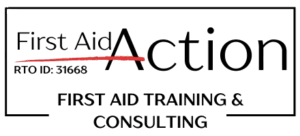
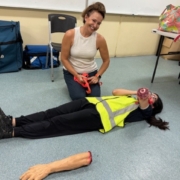
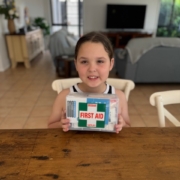
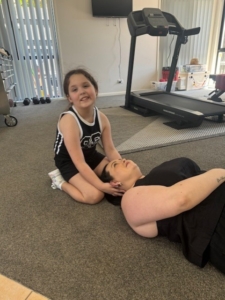 Here is 8 yr old Alexis helping her mum keep still after falling down the stairs at home.
Here is 8 yr old Alexis helping her mum keep still after falling down the stairs at home.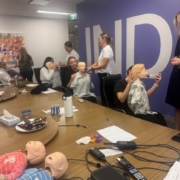
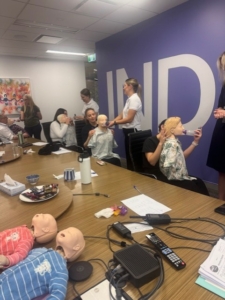 Staff from Dexus (Indooroopilly Shopping Centre Management) learning how to assist with an Asthma Attack.
Staff from Dexus (Indooroopilly Shopping Centre Management) learning how to assist with an Asthma Attack.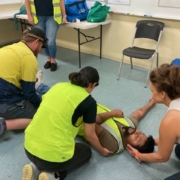
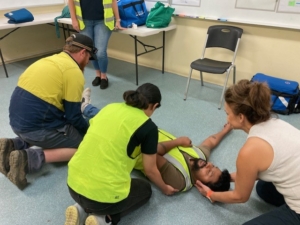 Luella demonstrating a Log Roll.
Luella demonstrating a Log Roll.